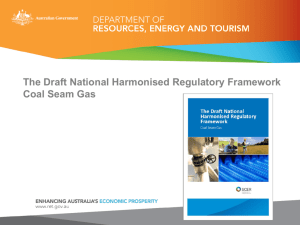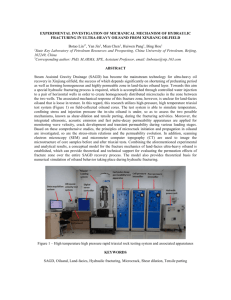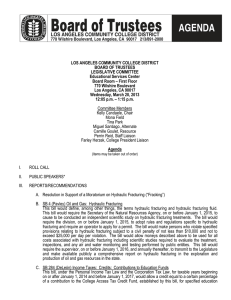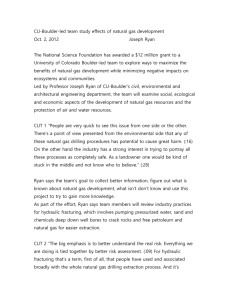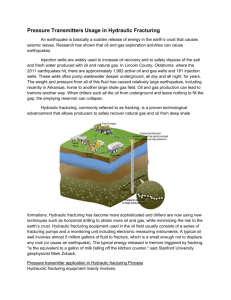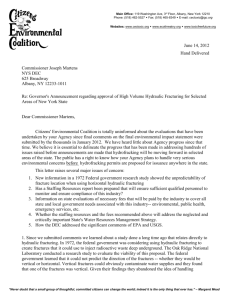hydraulic fracturing to improve in situ remediation
advertisement
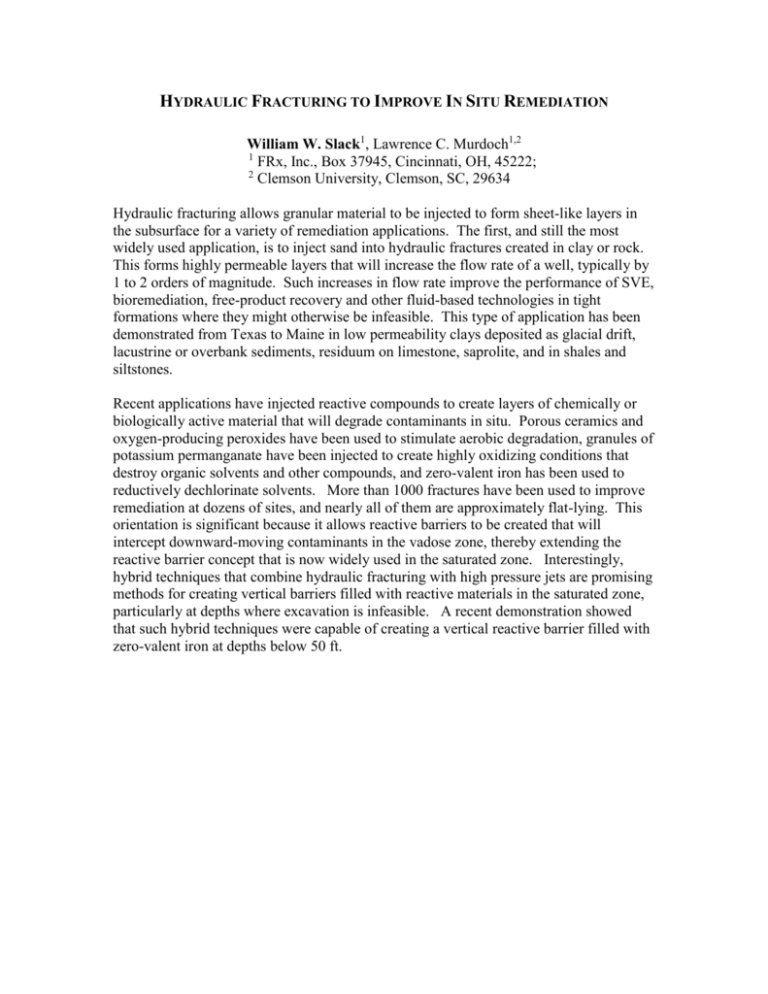
HYDRAULIC FRACTURING TO IMPROVE IN SITU REMEDIATION William W. Slack1, Lawrence C. Murdoch1,2 1 FRx, Inc., Box 37945, Cincinnati, OH, 45222; 2 Clemson University, Clemson, SC, 29634 Hydraulic fracturing allows granular material to be injected to form sheet-like layers in the subsurface for a variety of remediation applications. The first, and still the most widely used application, is to inject sand into hydraulic fractures created in clay or rock. This forms highly permeable layers that will increase the flow rate of a well, typically by 1 to 2 orders of magnitude. Such increases in flow rate improve the performance of SVE, bioremediation, free-product recovery and other fluid-based technologies in tight formations where they might otherwise be infeasible. This type of application has been demonstrated from Texas to Maine in low permeability clays deposited as glacial drift, lacustrine or overbank sediments, residuum on limestone, saprolite, and in shales and siltstones. Recent applications have injected reactive compounds to create layers of chemically or biologically active material that will degrade contaminants in situ. Porous ceramics and oxygen-producing peroxides have been used to stimulate aerobic degradation, granules of potassium permanganate have been injected to create highly oxidizing conditions that destroy organic solvents and other compounds, and zero-valent iron has been used to reductively dechlorinate solvents. More than 1000 fractures have been used to improve remediation at dozens of sites, and nearly all of them are approximately flat-lying. This orientation is significant because it allows reactive barriers to be created that will intercept downward-moving contaminants in the vadose zone, thereby extending the reactive barrier concept that is now widely used in the saturated zone. Interestingly, hybrid techniques that combine hydraulic fracturing with high pressure jets are promising methods for creating vertical barriers filled with reactive materials in the saturated zone, particularly at depths where excavation is infeasible. A recent demonstration showed that such hybrid techniques were capable of creating a vertical reactive barrier filled with zero-valent iron at depths below 50 ft.
